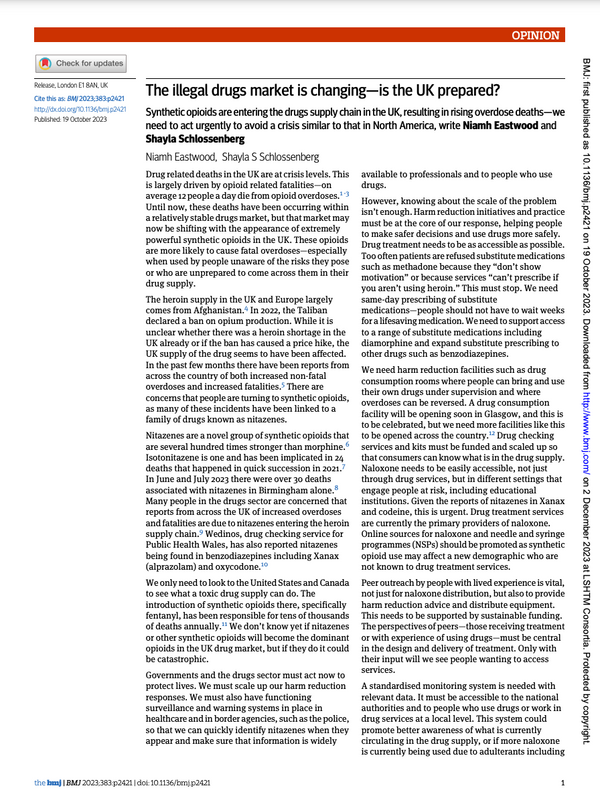British Medical Journal
The illegal drugs market is changing—is the UK prepared?
Nitazenes are a novel group of synthetic opioids that are several hundred times stronger than morphine. Isotonitazene is one and has been implicated in 24 deaths that happened in quick succession in 2021. In June and July 2023 there were over 30 deaths associated with nitazenes in Birmingham alone. Many people in the drugs sector are concerned that reports from across the UK of increased overdoses and fatalities are due to nitazenes entering the heroin supply chain.
Governments and the drugs sector must act now to protect lives. We must scale up our harm reduction responses. We must also have functioning surveillance and warning systems in place in healthcare and in border agencies, such as the police, so that we can quickly identify nitazenes when they appear and make sure that information is widely available to professionals and to people who use drugs.
However, knowing about the scale of the problem isn’t enough. Harm reduction initiatives and practice must be at the core of our response, helping people to make safer decisions and use drugs more safely. Drug treatment needs to be as accessible as possible. We need same-day prescribing of substitute medications—people should not have to wait weeks for a lifesaving medication.We need to support access to a range of substitute medications including diamorphine and expand substitute prescribing to other drugs such as benzodiazepines.
We need harm reduction facilities such as drug consumption rooms where people can bring and use their own drugs under supervision and where overdoses can be reversed. Drug checking services and kits must be funded and scaled up so that consumers can know what is in the drug supply. Naloxone needs to be easily accessible, not just through drug services, but in different settings that engage people at risk, including educational institutions. Given the reports of nitazenes in Xanax and codeine, this is urgent. Drug treatment services are currently the primary providers of naloxone. Online sources for naloxone and needle and syringe programmes (NSPs) should be promoted as synthetic opioid use may affect a new demographic who are not known to drug treatment services.
A standardised monitoring system is needed with relevant data. It must be accessible to the national authorities and to people who use drugs or work in drug services at a local level.
